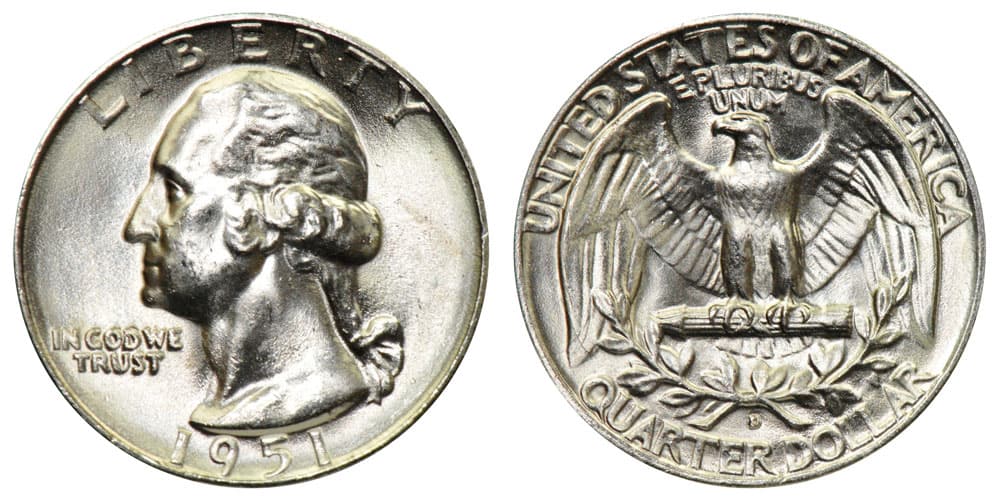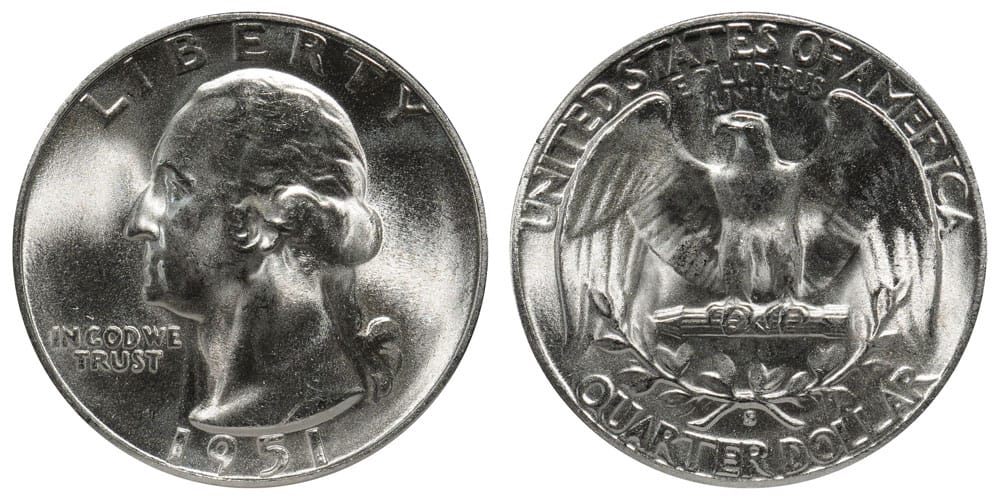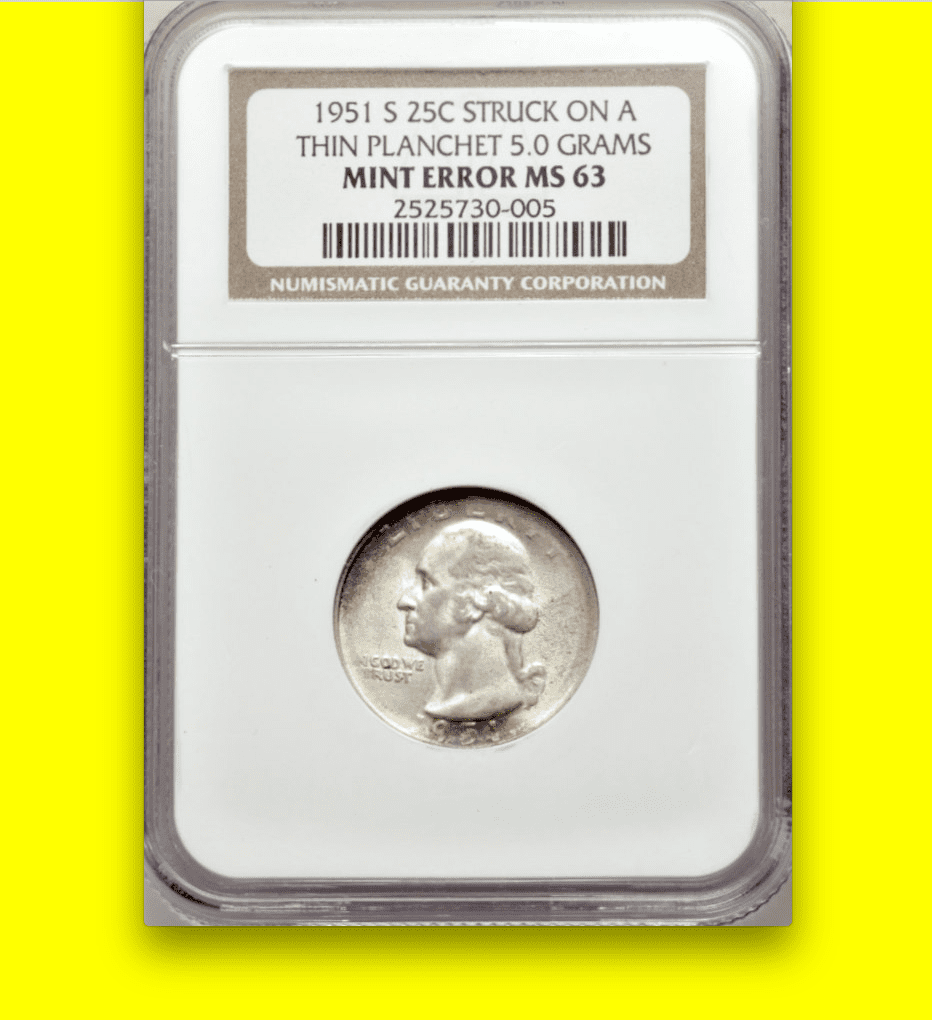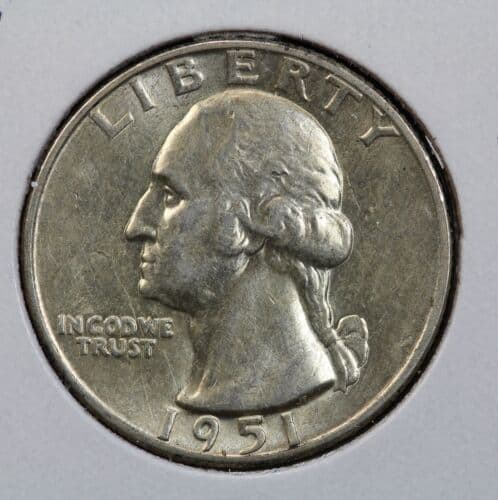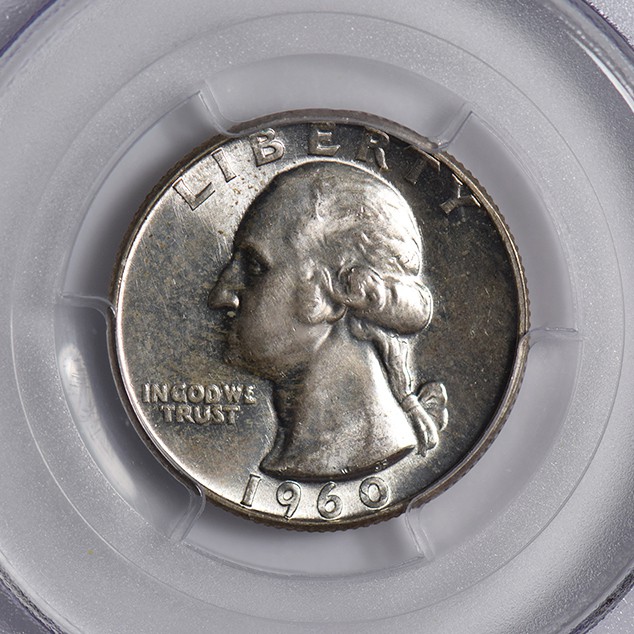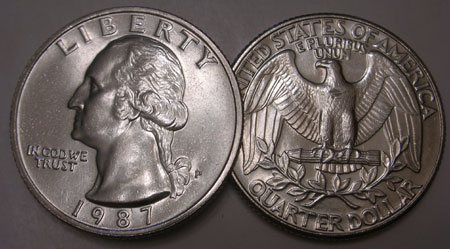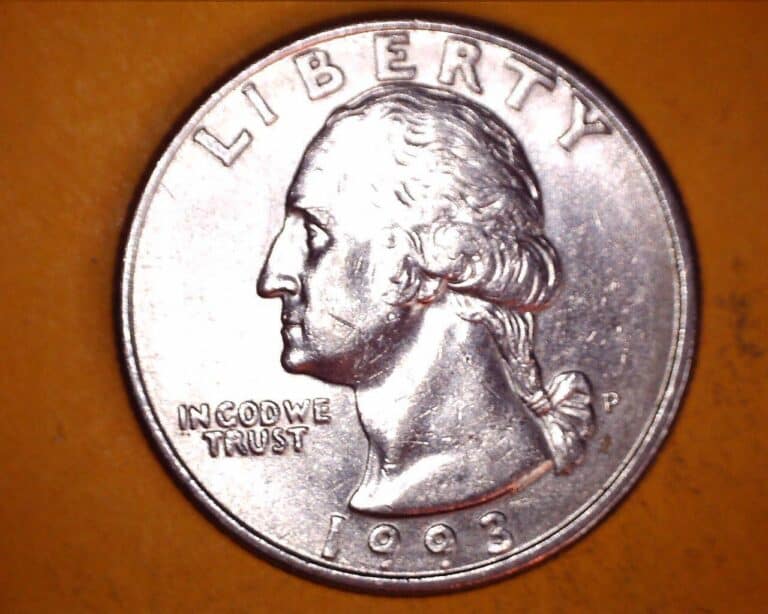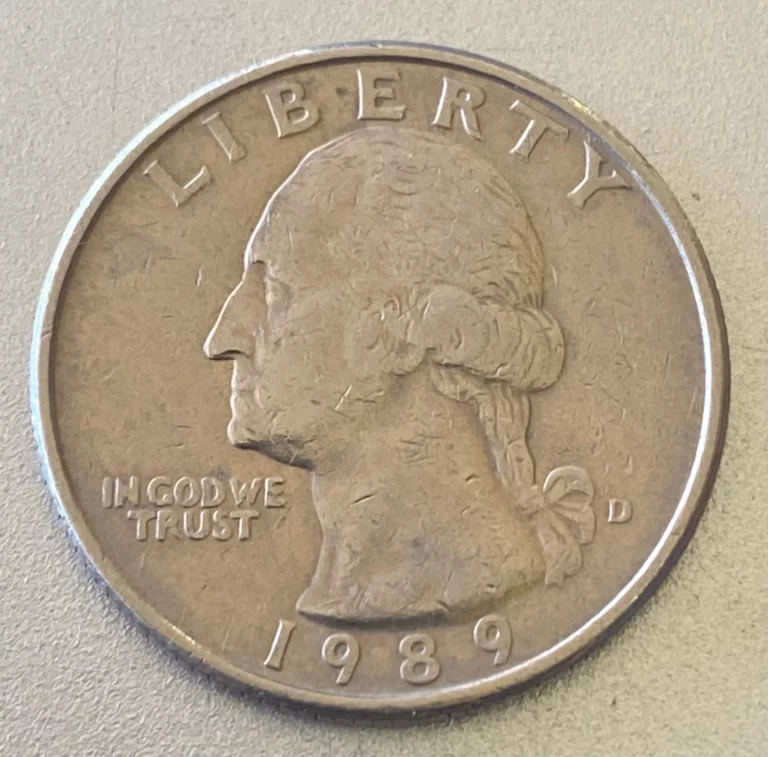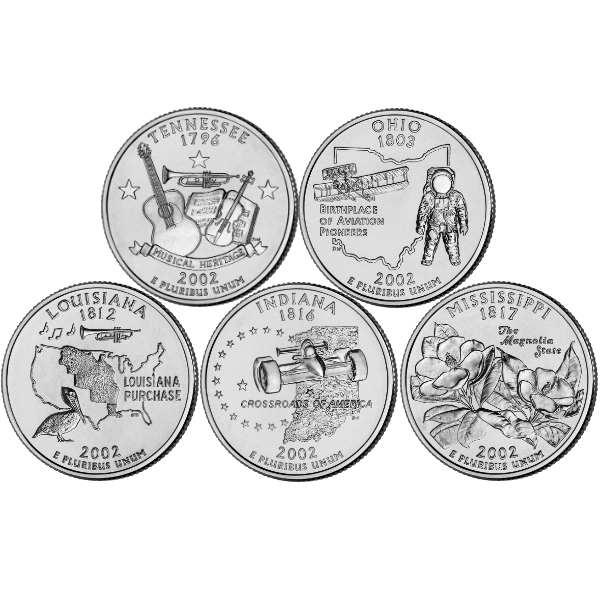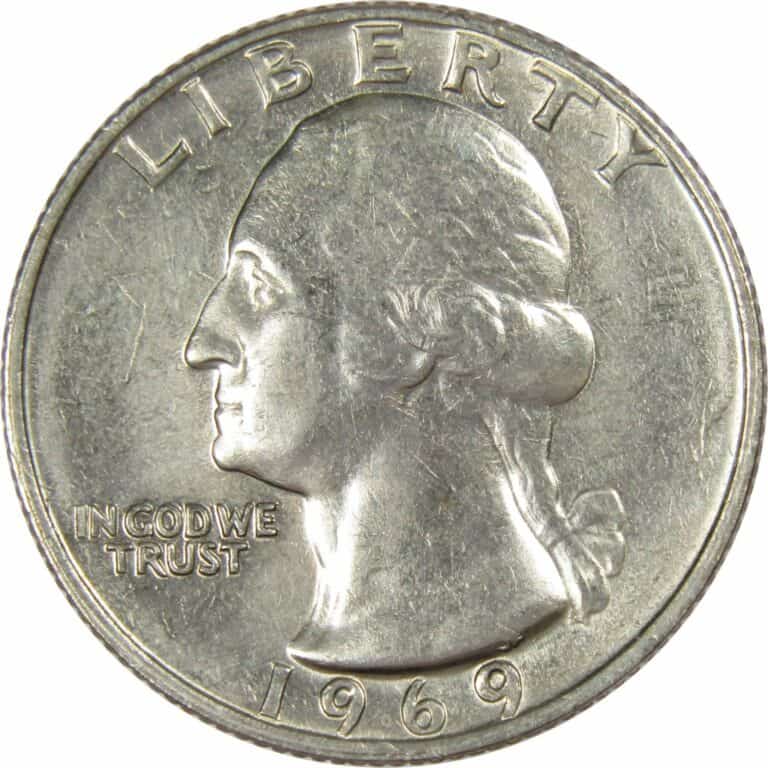1951 Quarter Value: How Much Is It Worth Today?
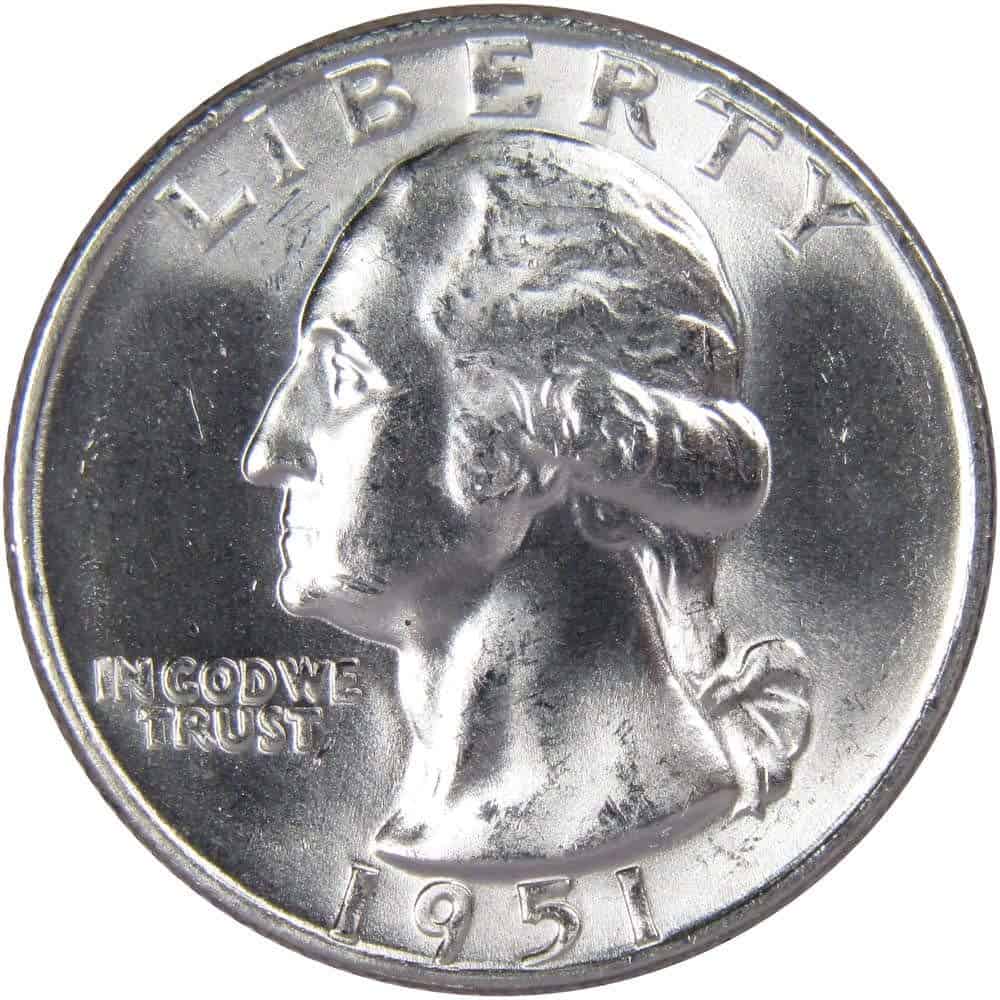
The 1951 Washington Quarter has a value for numismatic fanatics and laymen. If you’ve found this particular quarter at home it’s possible it is worth a little bit of money. The 1951 quarter value can vary. However, it’s always worth at least its value in silver. The Washington Quarter should therefore be of interest to anyone who comes across it; it’s worth more than 25 cents.
1951 Quarter Value Chart |
||||
| Series/Mint Mark | Extremely Fine | MS 60 | MS 65 | MS 67 |
| 1951 No Mint Mark Quarter Value | $6 | $10 | $30 | $235 |
| 1951 D Quarter Value | $6 | $10 | $32 | $350 |
| 1951 S Quarter Value | $6 | $17 | $40 | $180 |
| 1951 No Mint Mark Proof | $32 (PR 60) | $200 – 2000 | $500 – 17,500 | $500 – 20,000 |
1951 No Mint Mark Quarter Value
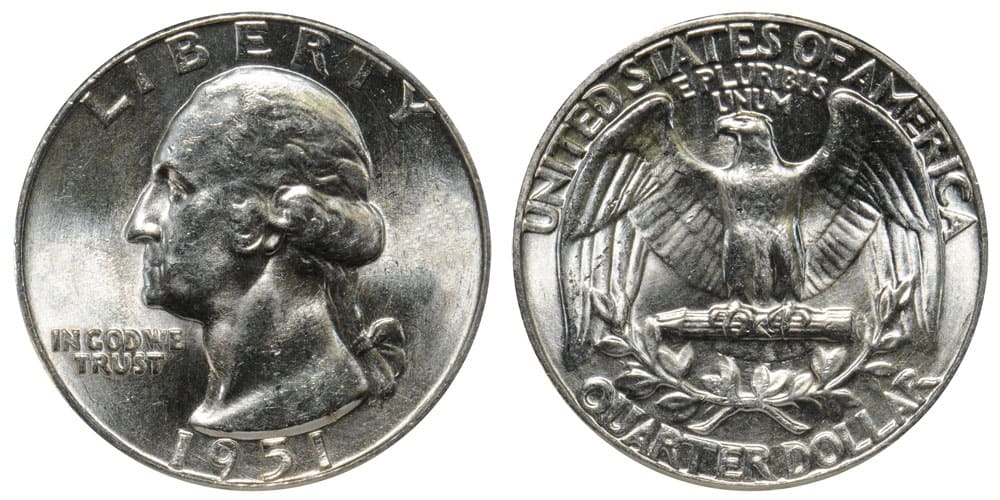
There are a few different versions of this 1951 quarter. All of these have a value significantly higher than their face value – often even much higher than their silver value.
You can tell coins apart (from where they were produced) based on the mint mark. The mint mark is a small letter engraved on the coin. It can be placed either on the obverse or the reverse. Every coin series from a given year will have the mint mark on the same location on the coin. That means you don’t have to look for it individually on every coin.
If you have one of these coins in possession, it’s possible you can’t find a mint mark. That would mean your coin was minted in Philadelphia. Other than one special occasion during the 1940s, Philadelphia did not put mint marks on its coins.
In 1951, the Philadelphia Mint produced 43,5 million coins. The 1951 no mint mark, is generally the least valuable coin of the entire 1951 Washington series. Partly, it has something to do with it being the highest-produced Washington quarter this year. However, the quarter is considered a highly valuable coin by comparison to other historic coins.
By looking at the chart above, you can see that the average is extremely fine, and MS 60 coin will get you a few dollars for a coin whose face value is only 25 cents.
As you get into higher MS gradings, one single coin can be worth hundreds of dollars. In 2009, a total of 37 no mint mark coins were graded MS 67 and were valued at $2300 per coin. Another coin was graded MS 68 and sold for $2530. The average no mint mark coin doesn’t reach these levels, but this speaks to the scarcity of well-preserved coins that deserves high MS grades.
Obverse
The design of this coin comes from sculptor and coin designer John Flanagan. There are aspects of this coin that are typical for coins, and aspects that are quite unusual – especially on the reverse.
The main feature of the obverse is the portrait of America’s first president George Washington. He is facing the left, which is the most common direction for coin portraits to have. Although some images face the other direction.
There are two phrases on the obverse that are inscribed on essentially every single American coin. Along the upper edge of the coin, right above Washington’s head, is the word “liberty”. Underneath his chin, we see the American motto “In God We Trust”.
Phrases like this come from the Declaration of Independence and are truly part of American history, which is why it’s also featured on coins.
Edges of coins come in different types; they’re either smooth or reeded. The Washington Quarter has the reeded edge. This has no impact on the coin’s value. It’s simply a matter of style and preference when the design is made.
Reverse
The 1951 quarter’s reverse contains the most unusual aspects compared to other coins. At first glance, it’s almost difficult to make out what is going on in the reverse.
What we see in the center is an American bald eagle. This is yet another very common feature of American coins. The eagle spread its wings which take up the majority of the coin’s surface.
It looks like the eagle is sitting on a branch, but upon closer inspection, you’ll see that the eagle is holding several arrows in its claws. Underneath its feet is a large olive tree sprig, which extends up to cover part of the eagle’s spread wings.
Arcing along the bottom edge is the coin’s denomination “Quarter Dollar” engraved. Along the upper edge is the name “United States of America”. It stretches from one side to the other.
Lastly, above the eagle’s head, and between the wings, we see the phrase “E Pluribus Unum”, which is Latin for “Out of many, one”, which in turn is a reference to the American state system.
History
The planning and execution of getting this coin released to the public were not as straightforward as the government had hoped. Initially, the coin was supposed to be an anniversary coin commemorating the birth year of George Washington.
Washington was born in 1732, and this coin was set to be released in 1932. The designer chosen for this task was Laura Gardin Fraser. The denomination of the coin was going to be a silver half-dollar.
These plans were scrapped and they decided the make it a full-time coin and a permanent American currency. They then decided to make it a quarter coin, instead of a half dollar.
Since it would become a permanent coin, US Treasury Secretary Andrew Mellon was tasked with the design choices. The committee wanted to keep Fraser and her design, but Mellon did not want a woman designing the coin. Instead, he hired John Flanagan to design the new Washington Quarter.
Like most presidential coin portraits, Flanagan’s design was inspired by French sculptor Jean-Antoine Houdon who made busts of several American presidents.
Quarters from this year were minted in three different locations: Philadelphia, Denver, and San Francisco. One of the reasons that make these old coins special from a numismatic perspective is the change in composition.
Back in time, all coins minted were composed of mostly silver and a bit of copper. In the id 60s, this had to be changed due to the silver shortage. Silver become so expensive that it out-valued the denomination of their respective coins.
Many coins were melted for this very reason. The silver was more valuable than the coin itself. The US government decided to remove all silver content from most coins in use. Only specific and special coins could contain silver; the rest were to be created from 90% copper and 10% nickel.
This is still the composition that makes up modern coins.
Some of the historic silver coins are therefore highly valuable today because they no longer exist in high quantities. The Washington Quarter from 1951 was never mass-produced in the same way many other coins of those times were.
Less than 100 million in total were made this year across all three different mints. Comparatively, this is a low number. Some coins are minted over 500 million in one location only.
1951 D Quarter Value
You know a quarter was minted in Denver based on its mint mark “D”. The mint mark can be found on the reverse side of the coin. It’s located in the button center, right above the “R” in the word “quarter”, and right in between to leaves from the sprig.
Other than the mint mark, the design is exactly the same as the other commercially used coins.
Generally speaking, most minted in Denver will have a similar value as those made in Philadelphia. $6 for a quarter in “extremely fine” condition. However, as you start to increase the grading, the D value will go slightly above its no mint mark counterpart.
For example, we see in the chart that the 1951 D quarter of an MS 67 grading is worth approximately $350, whereas the Philadelphia coin lands on $235. The differences can partly be explained by the lower number of coins minted in Denver.
About 35,3 million coins were struck in Denver. The Professional Coin Grading Service (PCGS) has found and graded only 25 9151 Denver quarters to an MS67+. This means high-quality and well-preserved coins, minted in 1951, are rare.
A single 1951 quarter, with the grade MS 68, was sold for a whopping $17,750 at an auction in 2020. Another coin, of the same grading, was sold for $8400.
1951 S Quarter Value
If you see a Washington quarter with the mint mark “S”, you know it was minted in San Francisco. Normally, the San Francisco mint only produces the so-called “proofs”. This type of coin is specially made for collectors.
That means they’re not in public circulation. Generally, but not always, they’re valued higher than other coins in a series. However, a well-preserved and highly graded coin intended for circulation can be much more valuable than proofs.
Even though San Francisco only produced 9 million coins, the value is about the same as the ones made in Philadelphia and Denver. The average lower value is between 6-10 dollars.
As the MS scale gets higher, so will the value of a 1951 S quarter. The highest-graded S quarter has been valued at $13.000. Four of these are known to the PCGS.
1951 No Mint Mark Proof Quarter Value
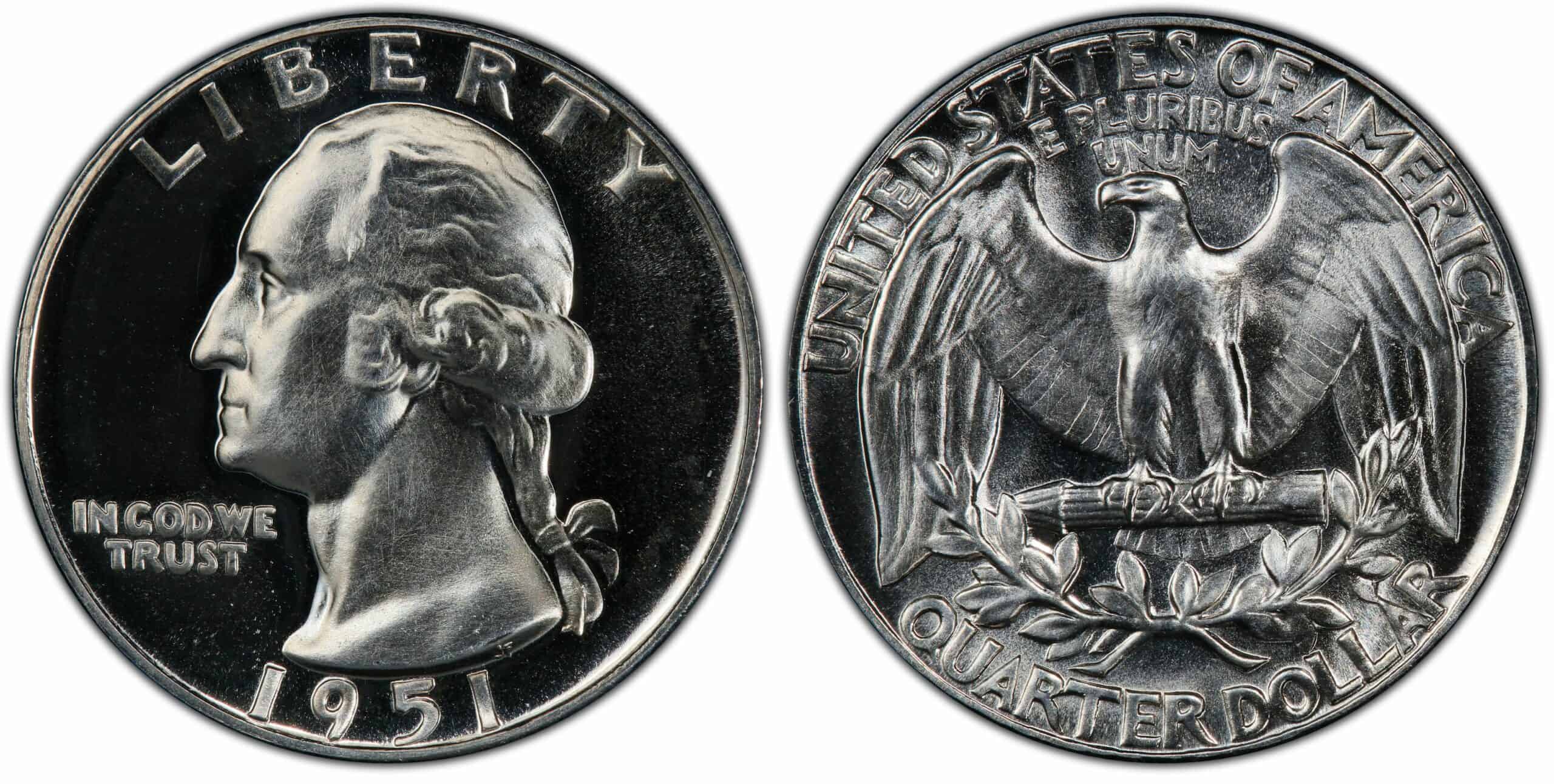
This coin is by far the most valuable in the entire 1951 series. Normally, proofs are made in San Francisco, but in this case, a small number of them were minted in Philadelphia. This is why these proofs don’t have a mint mark.
Only 57.500 of these were ever created. They can be worth thousands of dollars. A coin in absolutely perfect condition has been valued at $45.000 by the PCGS.
1951 Quarter Grading
Coin grading is a very meticulous business. An assessment of the value must be done carefully and with great detail. The smallest difference, mark, error, or blemish, can either increase or decrease the value of a coin by hundreds or thousands of dollars.
Rare 1951 Quarter Error
1951 Quarter Repunched Mint Mark Error
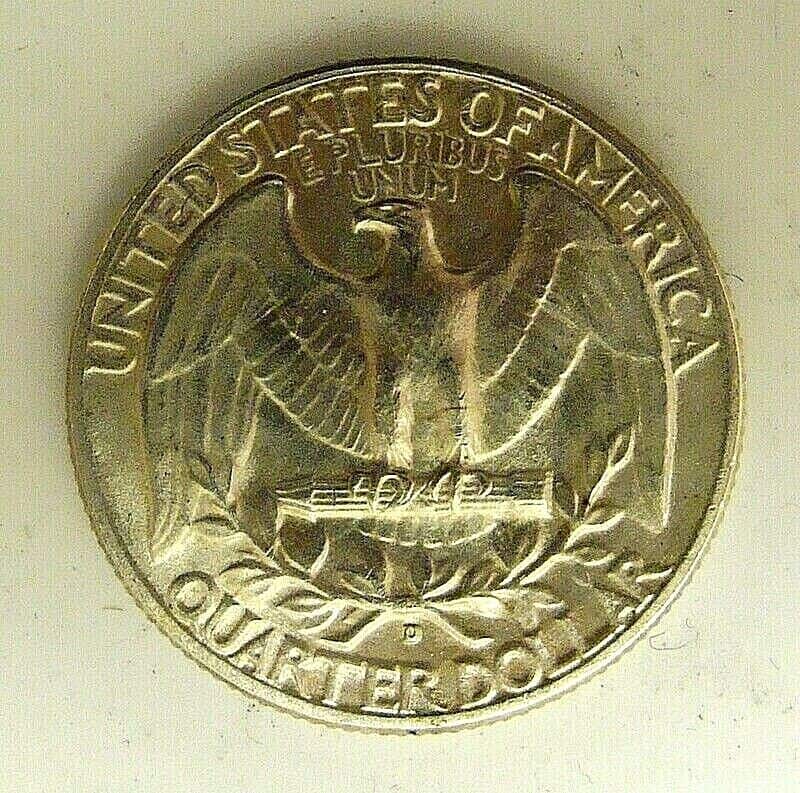
This error can only be noticed using a microscope because the mint marks are so small. It’s been mostly found in the Denver series. Depending on the severity and how noticeable the repunch is, the value can differ. In the past, coins with this error have been valued between $300 and $400.
1951 Quarter Wrong Planchet Error
From time to time, the planchet of the wrong denomination will find its way into different coins. A few coins minted in Philadelphia were struck on planchets which were intended for dimes. These can sell for $1000 even without mint condition.
1951 Quarter double die Error
If the die moves during striking a coin, it has to strike twice. This results in the image being doubled on top of each other. These types of errors can be valued at a few hundred dollars apiece.
1951 Quarter Value FAQ
Is a 1951 quarter pure silver?
No, while it is considered a silver coin, only 90% is silver. The rest is copper. After the mid-60s all quarters became 90% copper and 10% nickel.
Where is the mint mark on a 1951 quarter?
It’s on the reverse, right above the “R” in the word “quarter”, close to the bottom of the coin.
How much is a 1951 quarter with no mint mark?
Depending on its exact conditions, the coin with no mint mark can be worth 6-30 US dollars. If it’s been graded very high, its value can be worth several hundred dollars.
They are proof coins with no mint mark from 1951 and they have a value of several thousands of dollars. PCGS graded and valued one No Mint Mark Proof quarter to $45.000.
